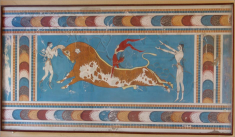Speaker
Description
Despite plenty of evidence for Dark Matter (DM) making up over 80% of the total matter in the universe, the quest of revealing its nature is still ongoing. The CRESST-III (Cryogenic Rare Event Search with Superconducting Thermometers) experiment is dedicated to direct DM detection. The sought-for signal is expected to originate from a DM particle scattering elastically off detector material nuclei. Crystals of various materials, such as CaWO$_4$, Al$_2$O$_3$, LiAlO$_2$, and Si, are operated as cryogenic calorimeters at mK temperatures. They are equipped with transition-edge-sensors (TES) for signal collection. Ultra-low energy thresholds of $\mathcal{O}(10~\text{eV})$, required for probing DM particles with sub-GeV masses, make CRESST-III one of the leading experiments in low-mass DM search. An unexpected background exceeding the level of known sources appears below 200 eV. The current data-taking campaign is dedicated to studying the origin of this so-called 'low energy excess' which is currently limiting the sensitivity of low-threshold experiments worldwide.
I will present an overview of the CRESST-III experiment and the latest results on both, DM search and low energy background investigation. Moreover, I will give an update on recent R&D efforts and conclude with the future perspectives of the CRESST DM program.
Details
Margarita Kaznacheeva, Ms, Technical University of Munich, Germany
https://www.tum.de/en/
| Is this abstract from experiment? | Yes |
|---|---|
| Name of experiment and experimental site | CRESST-III, Laboratori Nazionali del Gran Sasso (LNGS) |
| Is the speaker for that presentation defined? | Yes |
| Internet talk | No |
